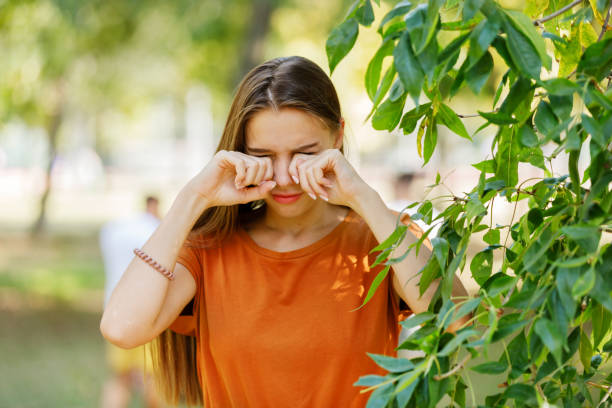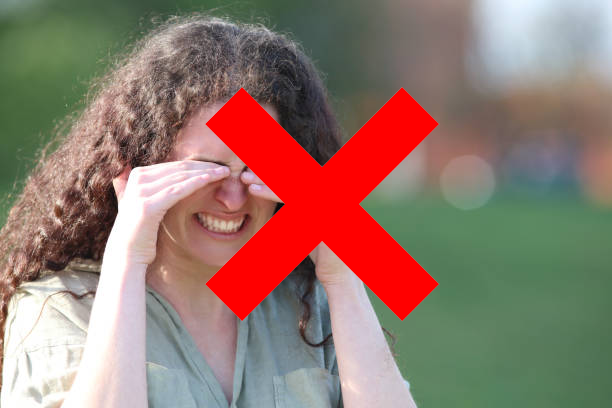Athletes train their bodies to perform at their best. But what about their eyes? Vision plays a huge role in sports. Whether tracking a ball, dodging an opponent, or making a split-second decision, clear and healthy eyesight is essential.
Yet, many athletes don’t think about eye protection. Sports-related eye injuries are common, and some can cause permanent damage. The good news? Most eye injuries can be prevented. This guide will help you understand how to protect your eyes while staying at the top of your game.
Why Eye Health Matters in Sports
Your eyes help you react quickly, judge distances, and stay aware of your surroundings. Good vision improves:
- Hand-eye coordination – Seeing clearly helps you react faster to a ball, opponent, or obstacle.
- Depth perception – Judging distances correctly is key in many sports, like basketball, tennis, and soccer.
- Peripheral vision – Seeing movement from the side can give you an edge over competitors.
- Focus and accuracy – Whether you’re aiming for a goal or lining up a shot, clear vision helps improve precision.
If your eyesight isn’t at its best, your performance may suffer. And if you don’t protect your eyes, injuries can put you on the sidelines.
Common Eye Injuries in Sports

Many sports pose a risk of eye injuries. The most common include:
1. Corneal Abrasions (Scratches on the Eye)
A poke, dust, or debris can scratch the eye’s surface. This is painful and may cause blurred vision.
2. Blunt Trauma (Impact to the Eye)
Getting hit in the eye with a ball, elbow, or racket can lead to swelling, bruising, or even fractures in the bones around the eye.
3. Retinal Detachment
A strong blow to the head or eye can cause the retina (the layer at the back of the eye) to tear. This is a serious condition that can lead to vision loss.
4. Penetrating Eye Injuries
Sharp objects like broken glasses or equipment can pierce the eye. These injuries are rare but can cause permanent damage.
5. UV Damage (Sunburn on the Eyes)
Outdoor sports expose athletes to UV rays. Over time, too much sun exposure can cause long-term eye problems, like cataracts.
Best Ways to Protect Your Eyes
Athletes can reduce their risk of eye injuries by taking a few simple precautions.
1. Wear Protective Eyewear

One of the best ways to prevent injuries is by wearing the right eyewear. Choose:
- Polycarbonate lenses – These are impact-resistant and won’t shatter.
- Goggles or sports glasses – Many sports have protective eyewear designed to fit under helmets.
- UV-blocking sunglasses – If you play outdoors, sunglasses with 100% UV protection shield your eyes from the sun.
2. Get Regular Eye Exams
Athletes should check their vision yearly. A comprehensive eye exam can detect vision problems and ensure you’re seeing your best. If you need glasses or contacts, make sure they fit well for sports.
3. Use Helmets with Face Guards
Sports like hockey, baseball, and lacrosse have high risks of facial injuries. Helmets with face shields or cages protect both the eyes and the head.
4. Keep Your Eyes Hydrated
Dry eyes can cause irritation, especially in outdoor or windy environments. Stay hydrated and use artificial tears if needed.
5. Take Breaks from Screens
If you train using video analysis or play e-sports, remember to take breaks. Staring at screens for long periods can strain the eyes. Use the 20-20-20 rule: every 20 minutes, look at something 20 feet away for 20 seconds.
6. Avoid Rubbing Your Eyes

If dirt or sweat gets into your eyes, don’t rub them. This can cause scratches or spread bacteria. Instead, rinse them with clean water or saline solution.
7. Be Aware of Concussions
Head injuries can affect vision. Blurred vision, double vision, or difficulty focusing after a hit may be signs of a concussion. If you notice these symptoms, see a doctor right away.
Best Eye Protection for Different Sports
Each sport has different risks. Here’s what athletes should consider:
- Basketball & Soccer – Use shatterproof goggles to protect against elbows and fast-moving balls.
- Baseball & Softball – Wear a helmet with a faceguard and protective sports glasses.
- Football & Hockey – Helmets with full-face shields provide the best protection.
- Tennis & Racquetball – Goggles with impact-resistant lenses protect against fast-moving balls.
- Cycling & Running – UV-blocking sunglasses reduce glare and protect from debris.
- Swimming – Goggles protect against chlorine irritation and infections.
Nutrition for Stronger Eyes
A healthy diet can also support eye health. Some key nutrients include:
- Vitamin A – Found in carrots, sweet potatoes, and spinach, it helps with night vision.
- Omega-3s – Found in fish like salmon and flaxseeds, they reduce dry eyes.
- Lutein & Zeaxanthin – Found in leafy greens, these help protect against UV damage.
- Vitamin C & E – Found in citrus fruits, nuts, and seeds, they help prevent eye diseases.
What to Do If You Get an Eye Injury
If you injure your eye, act fast:
- For scratches: Rinse with clean water and avoid rubbing.
- For impact injuries: Apply a cold compress but don’t press too hard.
- For serious injuries: Seek medical help right away. Do not try to remove objects stuck in the eye.
Conclusion
Your vision is a key part of athletic performance. Protecting your eyes can prevent injuries and improve your game. Whether you play contact sports, train outdoors, or use screens for strategy, taking care of your eyes should be part of your routine. By wearing the right protection, getting regular eye exams, and eating for eye health, you can keep your vision sharp and stay at the top of your sport. Don’t take your eyesight for granted—protect it like you would any other part of your body!
